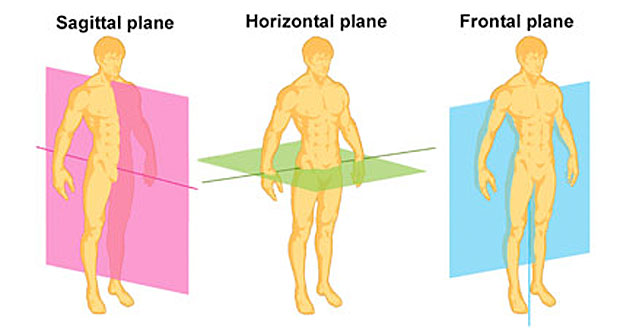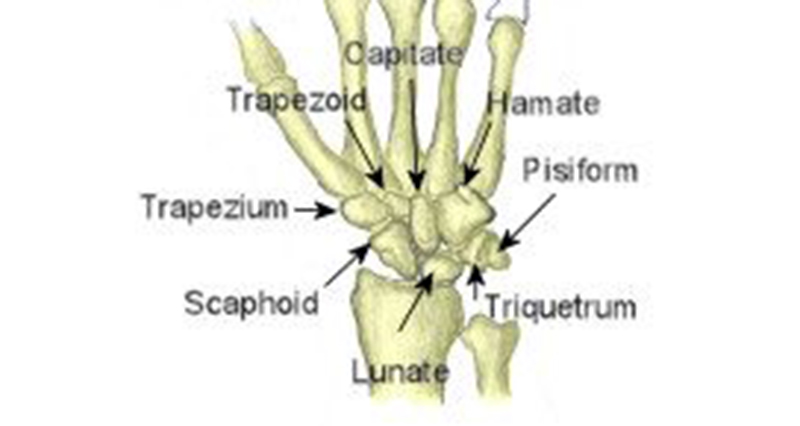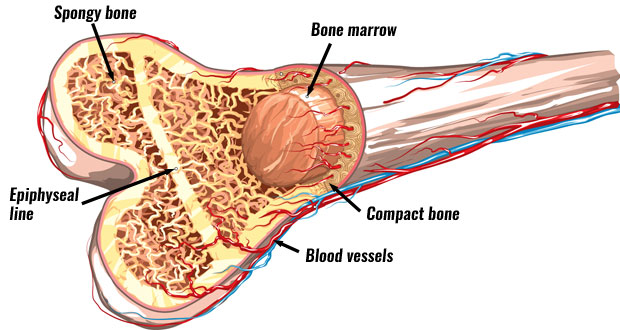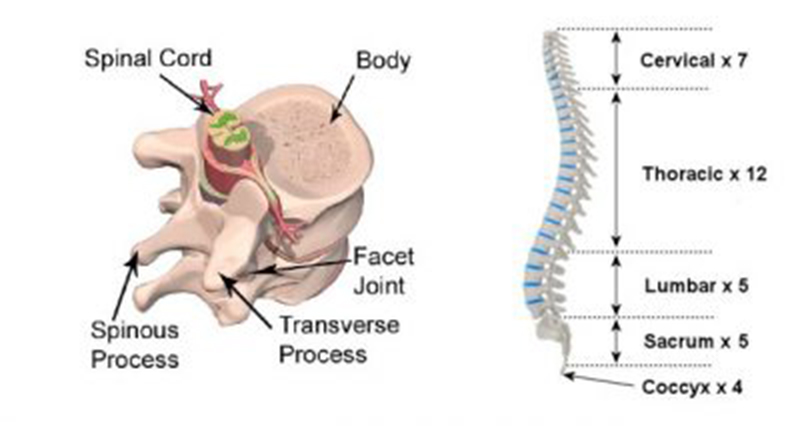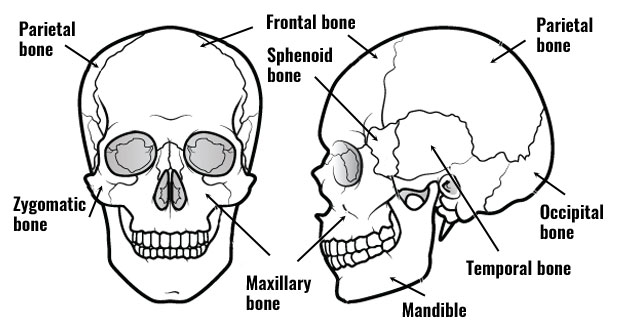Anatomical planes are the three planes of motion in which we move. Here we explain the frontal, transverse and sagittal planes as well as the anatomical position.
Sports scientists and medical professionals use the terminology to describe how the body moves.
If you think about it, most of our movements are not straight up and down or side to side, etc, especially in sports. They tend to combine a mixture of movements in different planes. The three planes of motion are:
Sagittal Plane
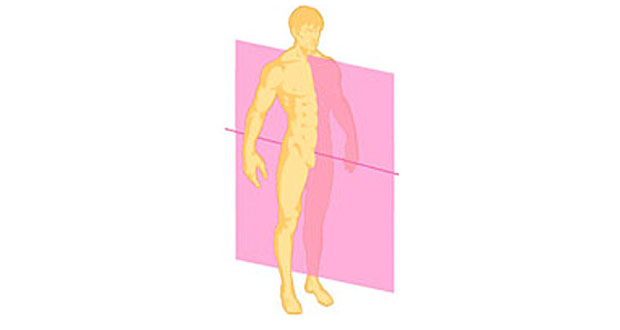
The Sagittal plane passes through the body front to back. It divides it into left and right. Movements in this plane of motion are up and down movements, for example, flexion and extension.
If you move your straight arm forwards and upwards from the hip, this is shoulder flexion. The movement occurs in the sagittal plane. Another example is lifting your knee up in front of you. This movement is knee flexion and also occurs in the sagittal plane of movement.
Frontal Plane
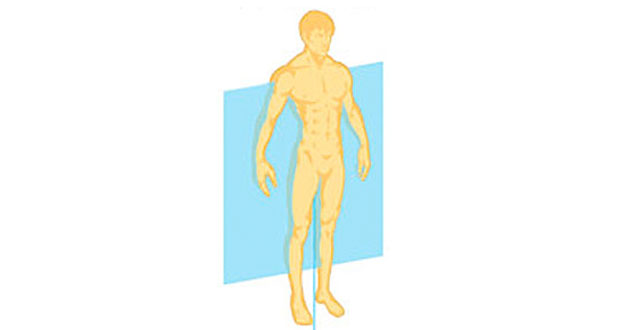
The frontal plane divides the body into front and back. Movements in this plane are sideways movements. Examples are abduction and adduction. Abduction is when you lift your arm out to the side. Adduction occurs when you move it back down to your side from the raised position.
Likewise, adduction if you pull your leg inwards from a raised sideways position. You are using your adductor muscles and we say the movement occurs in the frontal plane.
Transverse Anatomical Plane
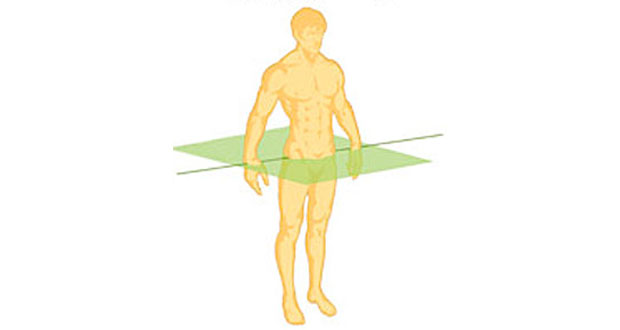
This plane divides the body into top and bottom. Movements in this plane are rotational in nature. For example, internal and external rotation of the shoulder joint.
The Anatomical Position
The anatomical position or neutral position is the starting position for describing movements in the anatomical planes. It is also called the anatomical starting position or fundamental starting position.
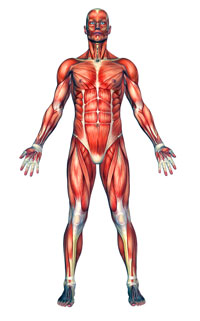
The anatomical neutral position is:
- Standing upright
- Legs together and knee straight
- Toes pointing straight forwards
- Arms by the side
- Palms facing forwards

